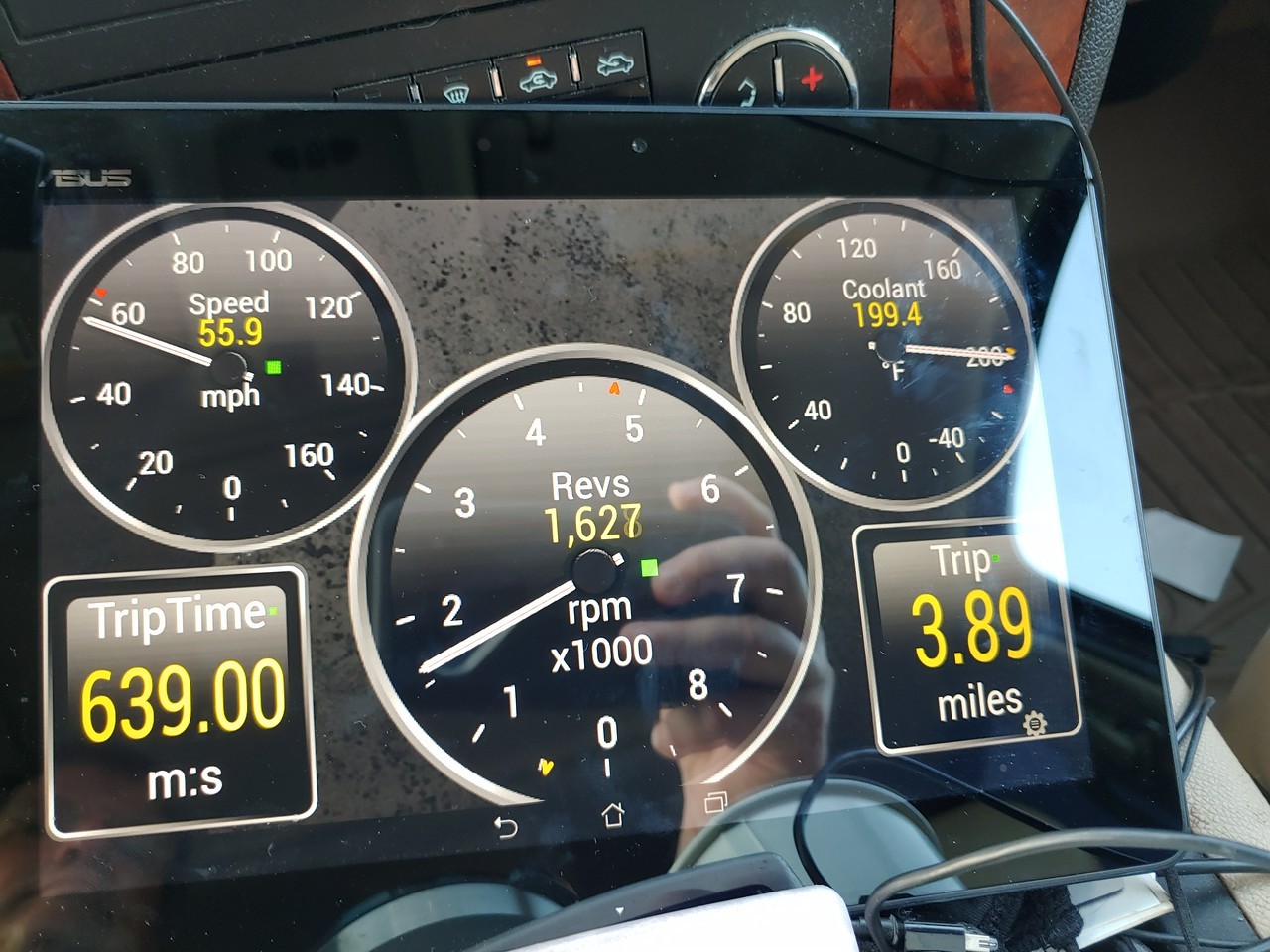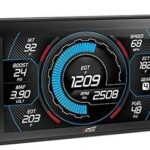Swapping an engine in your car, especially to a newer, OBD2-compliant one, opens up a world of possibilities. But it also presents a new challenge: monitoring your engine’s vital signs. Instead of cluttering your dashboard with a bunch of traditional gauges, have you considered a sleek, customizable, and cost-effective alternative? Enter the Obd2 Race Dash, powered by an Android tablet.
For budget-conscious racers and DIY enthusiasts, turning an Android tablet into a digital gauge display is a game-changer. Imagine using a simple tablet, readily available and affordable, to monitor everything from engine temperature and RPM to speed and throttle position. This approach is gaining traction in grassroots motorsports, particularly in series like Lemons, where resourcefulness is key. But is it a viable solution for you? Let’s delve into the pros and cons of using an Android OBD2 race dash.
The Allure of an Android OBD2 Race Dash
Why are more and more car enthusiasts turning to Android tablets for their digital dash needs? The reasons are compelling:
- Cost-Effectiveness: Compared to purchasing and installing individual mechanical or even dedicated digital gauges, using an old Android tablet you might already have (or a cheap new one) paired with an inexpensive OBD2 Bluetooth or wired dongle is significantly cheaper.
- Ease of Setup: The installation is remarkably straightforward. Mount your tablet, plug in your OBD2 dongle, install a compatible app like Torque, and you’re essentially ready to go. No complex wiring diagrams or sensor installations are needed for basic OBD2 data.
- Customization and Flexibility: Android apps like Torque Pro offer incredible customization. You can choose which gauges to display, their size, style, and layout. Want to monitor coolant temperature, oil pressure, and RPM prominently? Arrange them exactly how you want. Need to focus on different parameters for track vs. street driving? Switch layouts with ease.
- App Ecosystem: The Google Play Store is brimming with OBD2 apps. While Torque Pro is a popular and well-regarded choice, you can explore other options to find the interface and features that best suit your needs.
Navigating the Potential Pitfalls
While the Android OBD2 race dash offers numerous advantages, it’s essential to be aware of potential challenges and how to address them:
- Glare and Visibility: Like any screen, tablets can suffer from glare, especially in bright sunlight. Solutions include using matte screen protectors, positioning the tablet for optimal viewing angle, or even crafting a simple shade to block direct sunlight.
- Heat Management: Car interiors can get extremely hot, especially in direct sunlight. While tablets are generally robust, prolonged exposure to high temperatures can potentially affect longevity. For race applications or temporary setups, this might be less of a concern. For regular use, consider removing the tablet when parked in direct sun or ensuring adequate ventilation. Some users in online forums have reported years of use in hot climates without issues, suggesting it’s not always a major problem.
- Connectivity Reliability: Wireless OBD2 dongles rely on Bluetooth, which can sometimes experience intermittent connection drops. While many users report stable connections, especially with quality dongles, a wired OBD2 dongle can eliminate this potential issue for critical applications like racing.
- Power Supply: Tablets need power. You’ll need to figure out a reliable power source in your car. Options include using a USB car charger plugged into a 12V outlet, or hardwiring a USB power supply for a cleaner setup. Consider the tablet’s battery life and charging needs, especially for longer events like endurance races.
- Data Limitations: OBD2 data availability varies between vehicles. Some older or less sophisticated ECUs might not broadcast all the parameters you want to monitor, such as fuel level. While you’ll get core engine data, be aware of potential limitations for specific sensors. For parameters not available via OBD2, you might need to consider supplementary analog gauges.
Apps, Hardware, and Community Insights
- Torque Pro: Consistently mentioned as a top app for OBD2 dashboards, Torque Pro offers a rich feature set, customization options, and reliable performance. It’s a great starting point for most users.
- OBD2 Dongles: Choose between Bluetooth and wired dongles. Bluetooth offers convenience, while wired connections provide potentially more stable data transfer, crucial for racing. Invest in a reputable brand for better reliability.
- Tablets: Don’t feel you need the latest, most expensive tablet. Older Android tablets or budget-friendly options often work perfectly well for this application. Amazon Fire tablets can also be used, sometimes requiring rooting to install standard Android apps.
- Community Experience: Online forums and communities, like the one where the original question was posed, are invaluable resources. Users share their real-world experiences, tips, and troubleshooting advice. Many users in forums have reported successful and long-term use of Android tablets as race dashes in various vehicles, including race cars. They highlight the ease of use, customization, and cost savings. Experiences range from budget builds in Lemons cars to daily drivers, showcasing the versatility of this DIY solution.
Is an OBD2 Race Dash Right for You?
For DIY car enthusiasts, budget racers, or anyone looking for a flexible and affordable way to monitor their OBD2-equipped vehicle’s performance, an Android tablet race dash is an excellent option. While there are considerations like glare, heat, and connectivity to address, these are manageable with readily available solutions. By leveraging the power of Android apps and inexpensive hardware, you can create a personalized and informative digital gauge display without breaking the bank. Give it a try and transform your driving experience!

